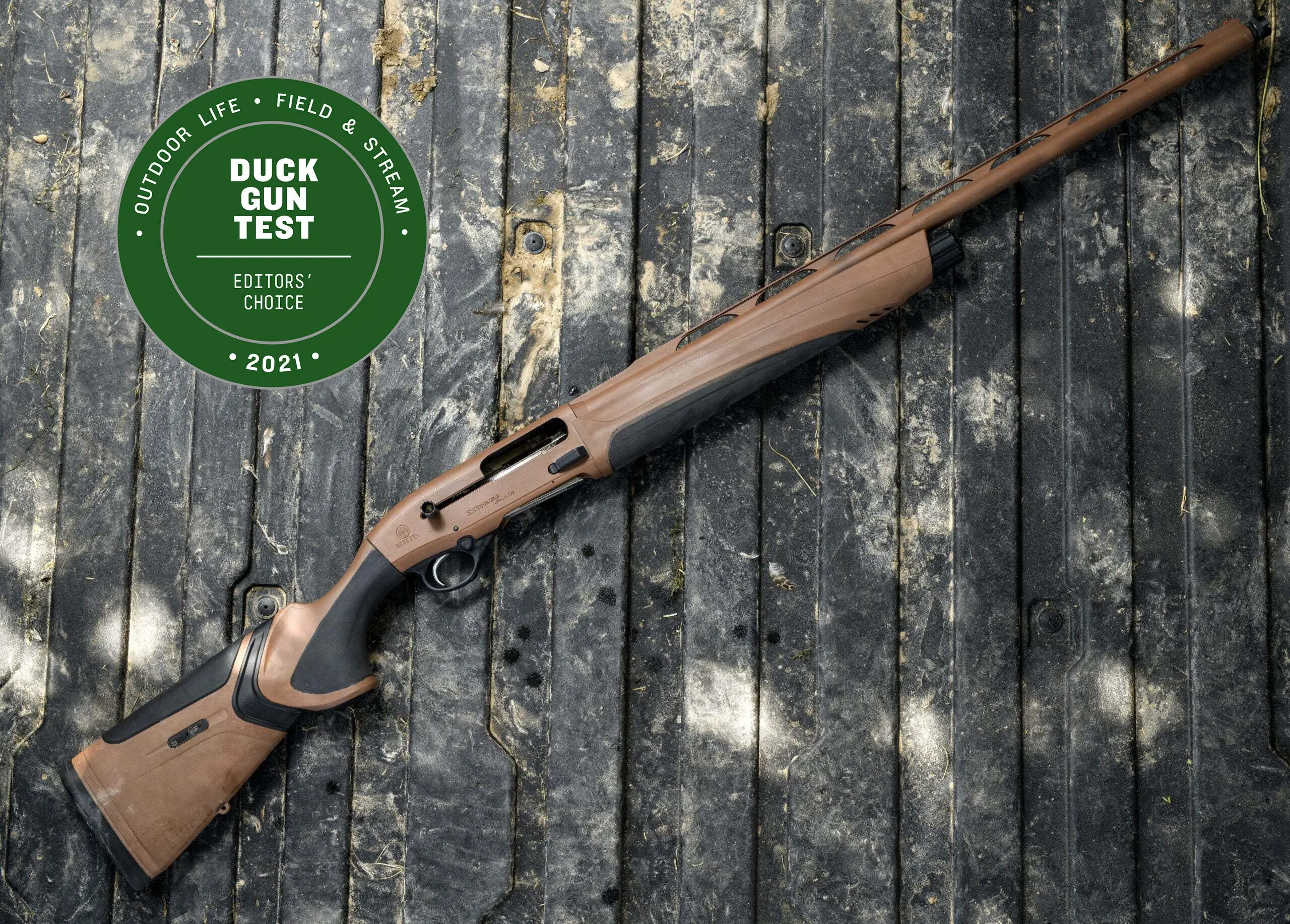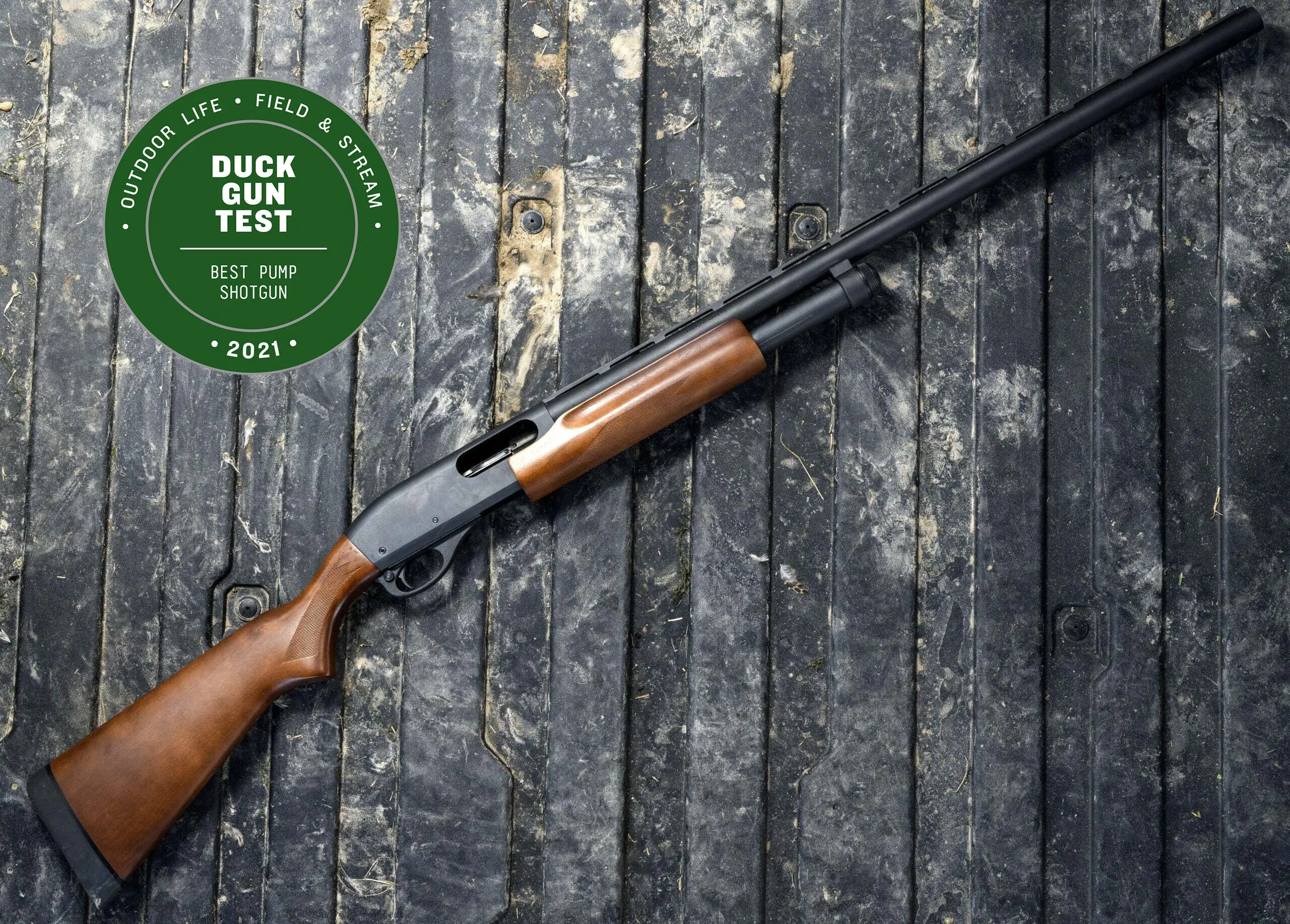We may earn revenue from the products available on this page and participate in affiliate programs. Learn more ›
_
Editor's Choice

Beretta A400 Xtreme Plus
LEARN MORE
Summary
Reliable and handles almost any load
Best Value
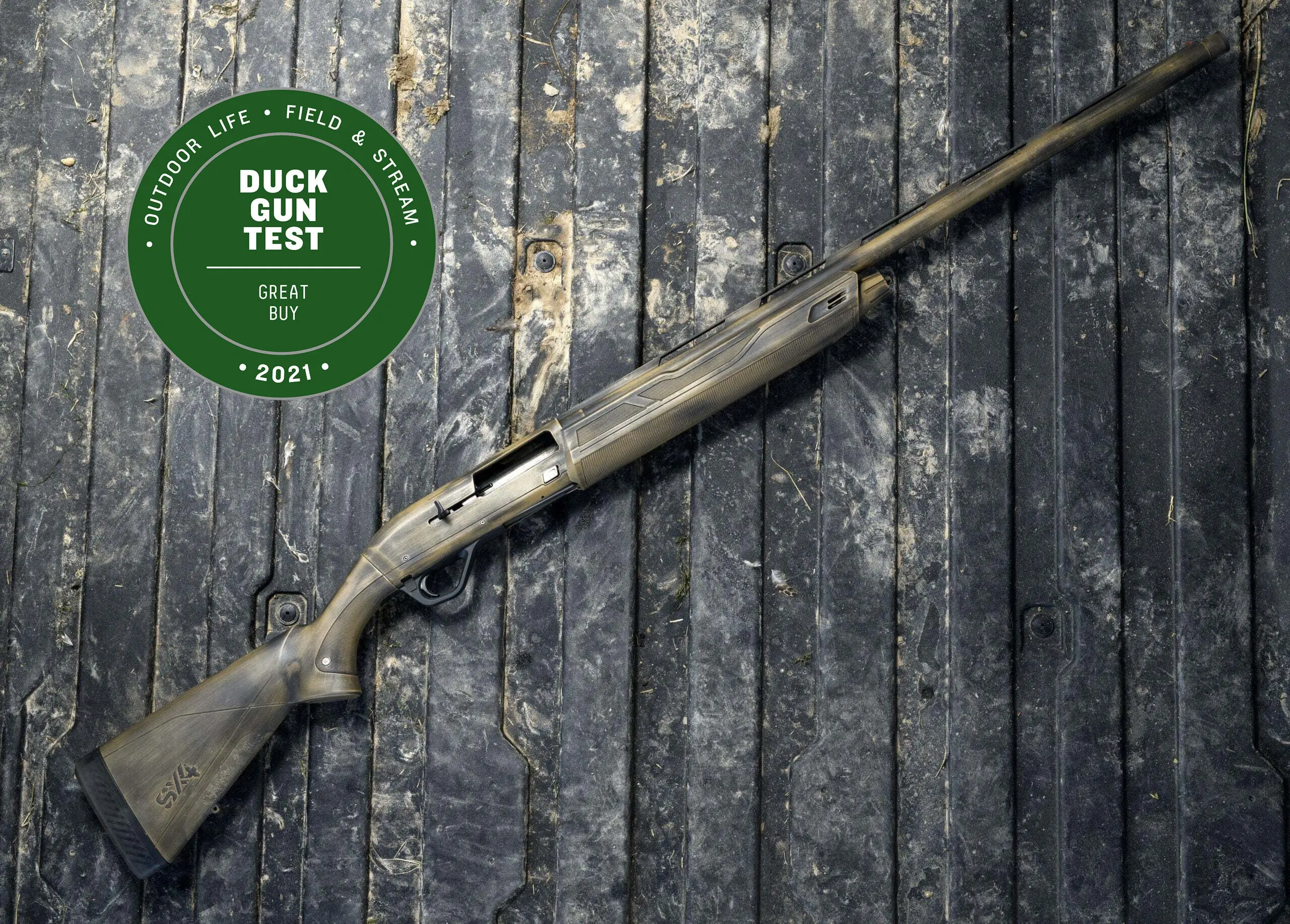
Winchester Super X4
LEARN MORE
Summary
Versatile and soft-shooting
Best Pump Shotgun

Remington 870 Express
LEARN MORE
Summary
Affordable and reliable action
_
If you’re one of the hundreds of thousands of hunters heading out to the blind this year and needs (or wants) a new waterfowl shotgun, we’re here to help you make that decision. Especially if that means taking 17 shotguns to Texas for a teal hunt that doubles as a test for the best duck hunting shotguns.
Our test team—F&S editor-in-chief Colin Kearns, Outdoor Life editor-in-chief Alex Robinson, OL senior editor Joe Genzel, and myself—has hunted all over the U.S., and in a few other countries. We know that waterfowl guns have to be versatile enough to tackle birds from 10-ounce teal up to giant Canada geese and 20-pound tundra swans. We know they have to be tough enough to withstand the elements and reliable, too. And we know they have to be shootable. It doesn’t matter how rugged or reliable your gun is if you can’t hit what you’re shooting at with it. Here’s what we found after putting the best duck hunting shotguns through their paces.
Best Duck Hunting Shotguns of 2023
Editor’s Choice: Beretta A400 Xtreme Plus
Best Value: Winchester Super X4
Best Pump Shotgun: Remington 870 Express
The Rest of The Best Duck Hunting Shotguns of 2023
How We Tested the Best Duck Hunting Shotguns
Our four testers traveled to Pintail Hunting Club in Garwood, Texas, for a three-day September teal hunt. Teal swarmed the club’s wetlands, rice fields, and moist soil units in such numbers that we shot limits in 30 to 40 minutes each morning, even as we paused the hunt to swap shotguns so we could try each on in the field and note their performance in the blind. Those short hunts left plenty of time for gun testing throughout the rest of the day.
We patterned each gun from a bench, in a Lead Sled, to test its point of impact. Using the Modified choke that came with each gun (except for the M2 Waterfowl which comes with custom Light Modified), we used 3-inch 1 ¼-ounce loads of 2 shot and shot at least three patterns at 35 yards with every gun to see how it performed with a typical all-around waterfowl load.
Weight is an important factor in how a gun carries and how it recoils. We weighed each gun. We also checked trigger pulls, because although shotgun triggers are slapped, some hunters appreciate a lighter pull, and some extremely heavy triggers can be hard even to slap.
Finally, we made extensive use of the 5-stand at Pintail Hunting Club where we got more trigger time with every gun and could evaluate its function, handling and felt recoil.
We evaluated the guns for:
Handling and Ergonomics
Shotguns are best used instinctively, and how a gun handles, balances, points, and swings—and how comfortable it is to hold—all have an effect on how easy the gun is to hit with. Although the trend is to lighter and lighter guns, heavier guns are easier to shoot. What matters even more than overall weight, though, is how that weight is distributed. Because waterfowl shooting is fairly deliberate when compared to upland shooting, the guns don’t have to be fast to the target, and some weight in the front end makes them easier to point surely and swing steadily.
A gun needs to feel right when you hold it. A gun with a lot of girth to the grip and forend is often easier to shoot because it’s more difficult to over-control the gun. But shooters with very small hands might do better with a trimmer gun.
Gun fit is part of the gun’s ergonomics. The ideal fit varies from person to person, yet some stocks suit a wide range of shooters. The Remington 1100, to name one gun, was an instant success not just because it recoiled softly, but its stock fit so many different people well. An increasing number of guns come with shims and spacers to allow their owners to adjust fit to some extent.
Finally, a gun’s controls—its trigger, safety, slide or bolt-release button, and bolt handle (if it has one)—need to be easy to use and located within reach. And they should be usable even when the shooter has cold, damp fingers or is wearing gloves. A gun should be easy to grip in bad weather, too. Most shotguns have some form of checkering, whether it’s molded into a synthetic stock or cut into a wooden one, to make them easier to grip. Others have rubber inserts designed to help you hang onto a wet gun.
Workmanship and Aesthetics
A shotgun, especially a waterfowl gun, is a tool. But that doesn’t mean it can’t be a well-made or good-looking tool. A gun is a lifetime purchase. You will look at it a lot. You may as well get something that sparks some pride of ownership.
There are functional reasons to consider workmanship as well. Poorly put-together guns can rattle and wiggle. A gun’s finish should look good, and protect it from the elements. A shoddy job of bluing, dipping or Cerakoting may not fully protect metal surfaces. Workmanship doesn’t mean what it did in the era of walnut stocks and blued steel. And even wood stocks are now made and finished primarily by machines and lasers, while synthetic furniture is molded. Even so, there is good molding and bad molding and good laser work and bad. When you’re paying up to $2,000 for a shotgun, it should look well-made.
A gun’s lines matter, too. An ungainly profile isn’t a deal-breaker, but if you like the way your gun looks, you’ll be happier with it. Some of the guns we tested have a classic look, others are very modern and which appeals to you is a matter of taste. Some designs are well-executed, though; others, not so much. You shouldn’t pick a gun purely on appearance, but it does matter to some hunters.
Versatility
Waterfowl hunting takes many forms, and waterfowl themselves range from tiny teal to giant Canada geese, cranes, and swans. Your shots may come at very close range, or you may have to reach out well past 40 yards. You may also want to use your gun for target shooting as well as upland, dove, or turkey hunting.
The first consideration in a versatile gun is the range of ammunition it can shoot. Three-inch chambers have become standard, and many guns can also shoot the 3 ½-inch shells favored by many goose and turkey hunters. But some semiautos chambered for 3 1/2-inch shells struggle to cycle very light loads used for dove hunting and target shooting.
A gun’s weight and balance matter, too. If all you’ll do with a duck gun is take it waterfowl hunting, it should be heavy to absorb recoil and swing smoothly. And that same heavy gun would work well for targets and doves. However, if you will take the same gun into the uplands (or carry it on long, jump-shooting expeditions for ducks) or into the turkey woods, you might prefer a gun that doesn’t weigh quite as much. You might want a shorter barreled or at least muzzle light gun that won’t tangle in the brush or might be quicker to the target. In terms of weight and balance, “versatility” is another word for “compromise.”
Reliability
Nothing else matters if a gun doesn’t shoot when you need it to. That’s especially true of waterfowl guns that need to deliver in cold, mud, ice, and snow. When you choose a duck gun, keep reliability in mind. Pump guns, although not as popular as they once were among duck hunters, will keep shooting in conditions that might sideline a semiauto.
Inertia operated semiautos have become a favorite of many hunters because they will run longer between cleanings and often handle bad weather conditions better than some gas guns. However, improvements in gas gun design has increased their reliability as well. And, within each action type, there are good models with good records for reliability and others that have earned a reputation for not working as well as they should or being fussy about maintenance. Durability becomes part of the reliability discussion, too. A gun that doesn’t hold up to rough treatment is more likely to stop working properly than a rugged gun might.
Value
You can spend $2,000 or more on a top-of-the-line gun, or as little as $300 for some bare-bones pumps. For some hunters, a $2,000 gun might be a great value, if it means they can make that expenditure once and have a gun that they can rely on to hold up day after day and season after season. Others may not hunt as much, or may not want to spend as much, or may not be able to budget that much money for a shotgun.
Remember, though, that a shotgun is a not just a lifetime purchase, but potentially an heirloom as well. Unless it’s junk, it will outlast you, so you should be sure that at whatever price you’re able to pay, you get a gun that gives you as much for your money as possible. A gun that doesn’t function properly is a poor value no matter how little you pay for it. On the other hand, a costly gun packed with features you may not need or care about isn’t a good value. We looked at what you get for the money with every one of the guns we tested, and we picked a Great Buy award, too.

| Lance Stancik, a managing partner at Pintail Hunting Club, scouts for ducks. Stephen Maturen |

| Boujaily’s master class on patterning. Stephen Maturen |
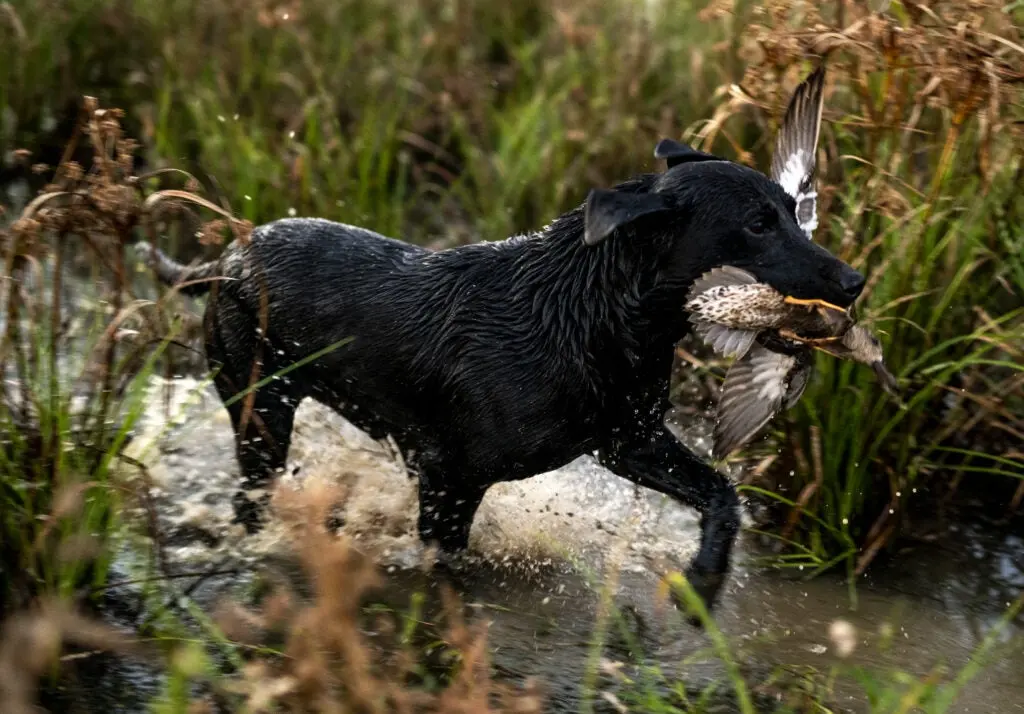
| Biggie retrieves another teal. Stephen Maturen |

| Turns out, teal hunting in Texas is a lot of fun. Stephen Maturen |
Best Duck Hunting Shotguns: Tested and Reviewed
Editors’ Choice: Beretta A400 Xtreme Plus

Specs
Gauge: 12
Chamber: 3.5-inch
Length: 49.5 inches
LOP: 14.3 inches
Trigger weight: 5.1 pounds
Overall weight: 7.8 pounds
Pros
Soft recoil
Very shootable
Reliable and handles almost any load
Cons
A bit heavy for all-day carry
Some shooters with small hands dislike a safety at the front of the trigger guard.
The Editors’ Choice for the best duck hunting shotgun came down to a shoot-off between two of the premier semiauto duck guns: the Benelli Super Black Eagle 3 and the Beretta A400 Xtreme Plus. When the smoke cleared, the Beretta had won over all four testers, including Robinson, who had provided his own personal SBE 3 for the test.
Recoil, or rather lack of felt recoil, tilted the scales in the Beretta’s favor. As a gas-operated semiautomatic, it already has an edge over an inertia-operated gun in terms of recoil reduction, and the Kick-Off Mega recoil reducer cuts the kick even more. It was also a heavier gun than the Benelli and several others in the test, weighing close to 8 pounds. And while the trend is toward light duck guns these days, heavy guns soak up recoil and, I believe, they are easier to shoot well.
The A400 Xtreme Plus is more than just a soft-shooter. While some testers didn’t like the weight and bulk of the hand-filling forend, the gun was undeniably easy to point and shoot, perhaps even because it was difficult to grip that big forend too tightly and over-control the gun. In my experience with these guns, they will shoot and cycle any load—from very light, 7/8-ounce reloads up to 3 ½-inch magnums—with impressive reliability. They will also go a long way between cleanings. The wide range of ammunition the A400 cycles makes it a versatile gun, too. You can hunt anything with it, from doves and clay targets on up to turkeys and geese. Although, it’s on the heavy side for an all-day upland hunt or serious running and gunning for turkeys. The gun patterned well for us at the range, and it shot dead-on to slightly (like 60-40) high for us on the bench.
The Xtreme Plus differs from the earlier Xtreme in that it has an enlarged bolt handle and release button—both features waterfowl hunters appreciate in cold, wet weather. Also, although it’s a small thing, I also like the magazine cap, which comes off with just a half-turn after you depress it (like it’s childproof) and is high-visibility green on the inside. This feature will come in handy should you ever drop a magazine cap in the marsh, which, not surprisingly, I have. (Read an extended review of the Beretta A400 Xtreme Plus here.)
Great Buy: Winchester Super X4

Specs
Gauge: 12
Chamber: 3.5-inch
Length: 49.5 inches
LOP: 14.25 inches
Trigger weight: 5.9 pounds
Overall weight: 7.1 pounds
Pros
Versatile
Soft-shooting
Patterns well
Cons
Poor styling
Finish not quite up to usual Winchester standards
The Winchester SX4 beat out a crowded field of semiautos in the sub-$1000 range, establishing itself in the eyes of the test team as the best value in a waterfowl gun. Can spend less on a duck gun? Of course. But it’s worth stretching even the tightest budget to move up to the X4, which can hold its own in the blind among the Benellis, Beretta, and Brownings.
Why did we love the Winchester Super X4? Well, I loved it because when it was my turn to shoot it, I bagged my six teal with seven shots, which has never happened before and may never happen again. All of us shot the gun well at ducks and at clays. As a gas gun, it’s very soft-shooting, and the Browning/Winchester Inflex recoil pad works, too, cutting the kick even more. Everyone shoots straighter when they’re not getting beaten up, and the stock comes with spacers so you can adjust the fit, too.
The X4 is the evolution (or devolution, if you ask cranks like me who prefer heftier guns and traditional styling) of the Super X2, which was derived from the Browning Gold, and which begat the SX3. The point is, the X4 uses a proven gas system, and all the X series have been reliable, easy-to-maintain performers. The X4 has been slimmed down and lightened up to fit current tastes and it has the enlarged bolt handle and bolt release that waterfowlers want. I do like the bolt-release button, which is big enough to be easy to push, but nearly flush so you don’t bump it accidentally as you do with so many of the enlarged bolt releases on the market. It also has a big, square safety button that’s easy to find with numb fingers and simple to reverse if you’re left-handed.
To my eye, the Winchester Super X4 is not as well fit and finished as its predecessors and it looks cheaper, but if Winchester has cut some costs with this gun, it doesn’t come at the expense of performance. A fairly light gun that will cycle 2¾-, 3-, and 3 ½-inch loads without complaint, the SX4 is a versatile semiauto that can handle almost any wingshooting assignment. It lists for $959, about half the price of anyone’s flagship semiauto. And if you don’t need 3 ½-inch capability, the 3-inch model is just $829. (Read a review of the Winchester Super X4 here.)
Best Pump Gun: Remington 870 Express

Specs
Gauge: 12
Chamber: 3-inch
Length: 48.5 inches
LOP: 14 inches
Trigger weight: 5.3 pounds
Overall weight: 7.6 pounds
Pros
Affordable
Slick and reliable action
Cons
Hard recoil pad
Metal parts prone to rust
Pumps will always have a place in the duck blind. They’re the bottom-of-the-boat gun. The gun you don’t mind banging against the steel frame of a pit blind. The gun you bring when rain, ice, snow, or grit turns semiautos into single shots. And, for years, the main reader question I answered was: Should I buy a Remington 870 or a Mossberg 500? Both have their strong points and have been made by the millions, but I always came down on the side of the Remington 870.
Made since 1950—and a triumph of mass production methods—the 870 was both affordable and reliable and it became an American classic almost immediately upon its introduction. As a solid, heavier, well-made gun with a steel receiver and fewer plastic parts than the Mossberg, it got my nod as the better choice of the two. Then, Remington quality took a nose-dive, and 870s, once the most reliable of pump guns, stopped working so well. And I began telling readers to buy the 500.
All of this is a long-winded way of saying that the 870 won the pump-gun category of our test, and I am delighted that it did. The new owners of Remington—now RemArms—seem to have solved some of the quality-control problems that plagued the guns over the past 15 or so years and the one we tested. Guns leaving the plant undergo much more rigorous inspections than they did under the former ownership.
This 870 was slick out of the box. It cycled shells without a bobble and, despite visible tooling rings in the barrel, it patterned well, too. RemArms has a way to go before this is the equal of the old Express shotguns—the hardwood stock looks even cheaper than old Express stocks, for instance, and this gun has a plastic trigger guard—but it also represents a huge step in the right direction. A 7 ½-pound, 3-inch 12 gauge with a 28-inch barrel, the gun comes with one Modified choke tube, which will see you through dove, pheasant, and waterfowl hunts plus 16-yard trap, and its matte-finished wood and metal won’t shine and spook birds. The 870 Express as we knew it is back, and we’re delighted to include this in our list of the best duck hunting shotguns. (Read an extended review of the Remington 870 Express here.)

| Pintail Hunting Club truly is special. We couldn’t have asked for a better place for our duck gun test. Stephen Maturen |
Standout Duck Hunting Shotguns
1) Benelli Ethos Cordoba BE.S.T.
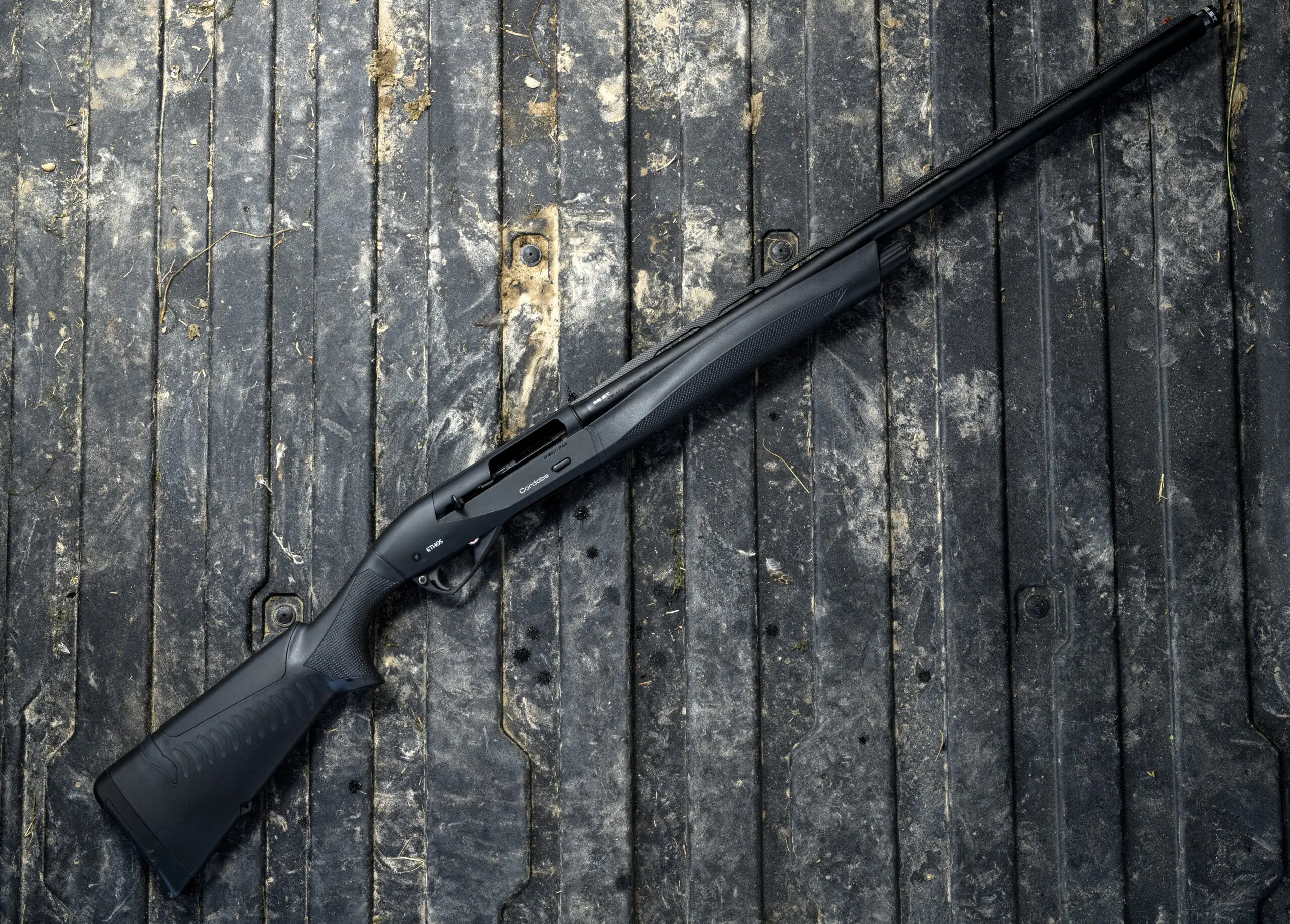
Specs
Gauge: 12
Chamber: 3-inch
Length: 49 inches
LOP: 14 inches
Trigger weight: 6.1 pounds
Overall weight: 6.5 pounds
Pros
BE.S.T. protection
Easy Lock bolt eliminates misfires
Cons
High point of impact
Price
A sort of field/competition gun hybrid, the Ethos Cordoba BE.S.T. is designed to withstand high volume shooting, and it fits well into the duck blind, too. Coated with Benelli Surface Treatment, a high-tech, rust-proof, and scratch-resistant finish, and upgraded with the Easy Lock bolt that eliminates out-of-battery misfires, the Cordoba also has the porting and wide rib of a clays gun and can be had with a 30-inch barrel. It’s a light gun at about 7 pounds, and it features the ComforTech stock to reduce recoil. It’s an easy gun to shoot well, and I liked everything about it except for the very high point of impact our test gun exhibited—and the $2,300 price tag. (Read a review of the Benelli Ethos Codroba BE.S.T. here)
2) Benelli M2 Performance Shop
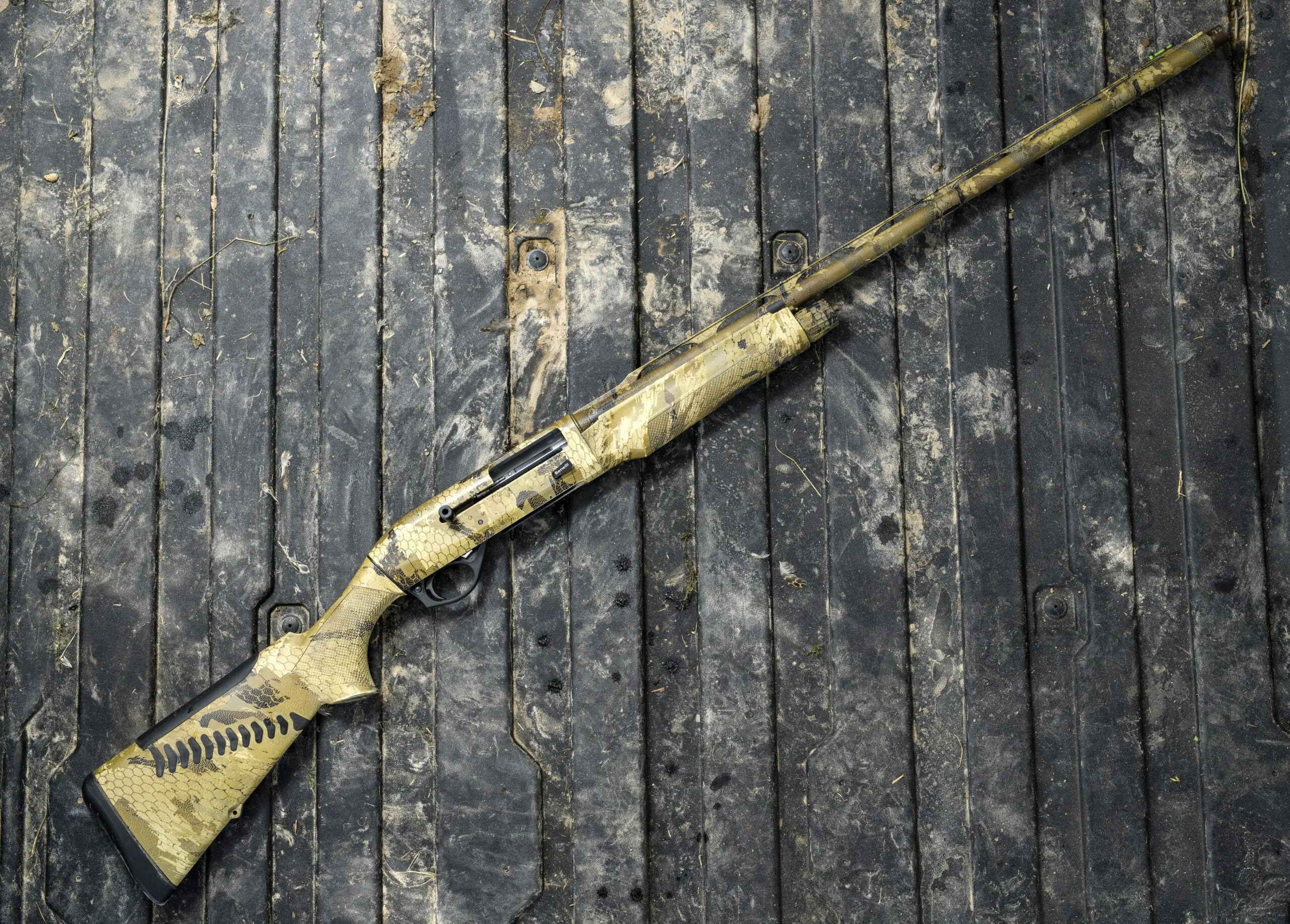
Specs
Gauge: 20
Chamber: 3-inch
Length: 48.5 inches
LOP: 13.7 inches
Trigger weight: 6.5 pounds
Overall weight: 6.9 pounds
Pros
Light weight
Modest recoil
Reliable performance
Cons
The price
One of Benelli’s Performance Shop tricked-out semiautos, the M2 starts as a stock M2 semiauto and gets custom chokes, enlarged bolt release and handle, and a nice paracord sling. I recognized it at our test gun immediately as the same one I had on loan for most of last year’s waterfowl season and can attest to its reliability—so long as you don’t knock the bolt out of battery as you can with most inertia guns. The ComforTech recoil reduction system works, too. It’s light and handy and the gun patterned extremely well with the bismuth ammunition I shot through it last fall. Given that a basic black M2 lists for $1,449, the $2,500 price tag for the enhanced Performance Shop version seems like way too much for the extras you do get.
3) Benelli Nova
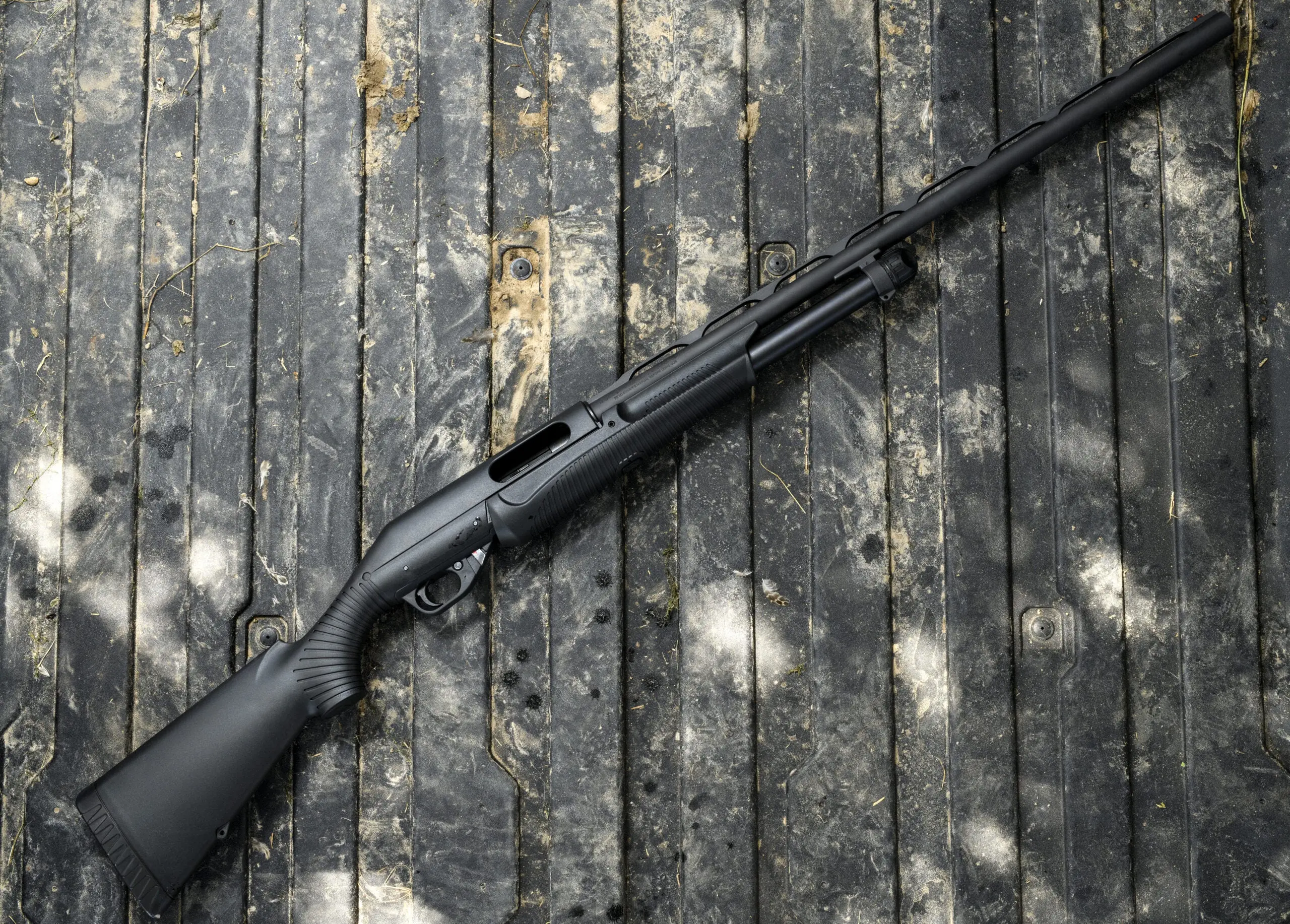
Specs
Gauge: 12
Chamber: 3.5-inch
Length: 49 inches
LOP: 13.7 inches
Trigger weight: 7.14 pounds
Overall weight: 7.7 pounds
Pros
Low price
Slick action
Cons
Heavy trigger
Fit can’t be adjusted
When the 3 ½-inch 12-gauge Nova was introduced twenty-some years ago, it looked like no other gun, with its futuristic styling and a one-piece reinforced polymer receiver and stock. The guns are durable and their rotary action makes them among the slickest pumps on the market. Nova forearms rattle, which bothers some and never bothered me at all.
The Nova we tested reminded me of the one I used to own and hunt with. It was tough. I abused mine by dropping it on riprap and in gravel parking lots with nothing more than cosmetic damage to an already ugly gun. Like my gun, this one had a trigger pull so heavy even I noticed it. It has a tiny safety button at the front of the trigger guard, which some people might not like, and the one-piece stock means it can’t be adjusted at all for drop and cast.
4) Benelli Super Black Eagle 3

Specs
Gauge: 12
Chamber: 3.5-inch
Length: 49. 5 inches
LOP: 14 inches
Trigger weight: 6.2 pounds
Overall weight: 7 pounds
Pros
Handles well
Good controls
Inertia click-proof
Cons
Shoots high
Benelli’s Super Black Eagle is now in its third iteration, having become lighter and trimmer with each makeover, and it now comes in 3-inch 12 and 20 gauges, as well as the original 3 ½-inch 12. We tested an older SBE3 that belonged to Robinson. There is a lot to like about the SBE3, which I have hunted with in the past. It handles and points well. And despite being a light inertia gun, it doesn’t kick painfully due to the ComforTech recoil reduction system. The controls are easy to use, even with cold fingers, and the Easy Lock bolt does away with the out-of-battery misfire common to inertia guns.
It did shoot quite high, as is the case with many SBE3s—especially early ones. And while that bothered us on the pattern board, we had no problem hitting clays or teal with the gun, but I wouldn’t want to hunt turkeys with it. (Read a review of the Super Black Eagle 3 here.)
5) Beretta A300 Ultima
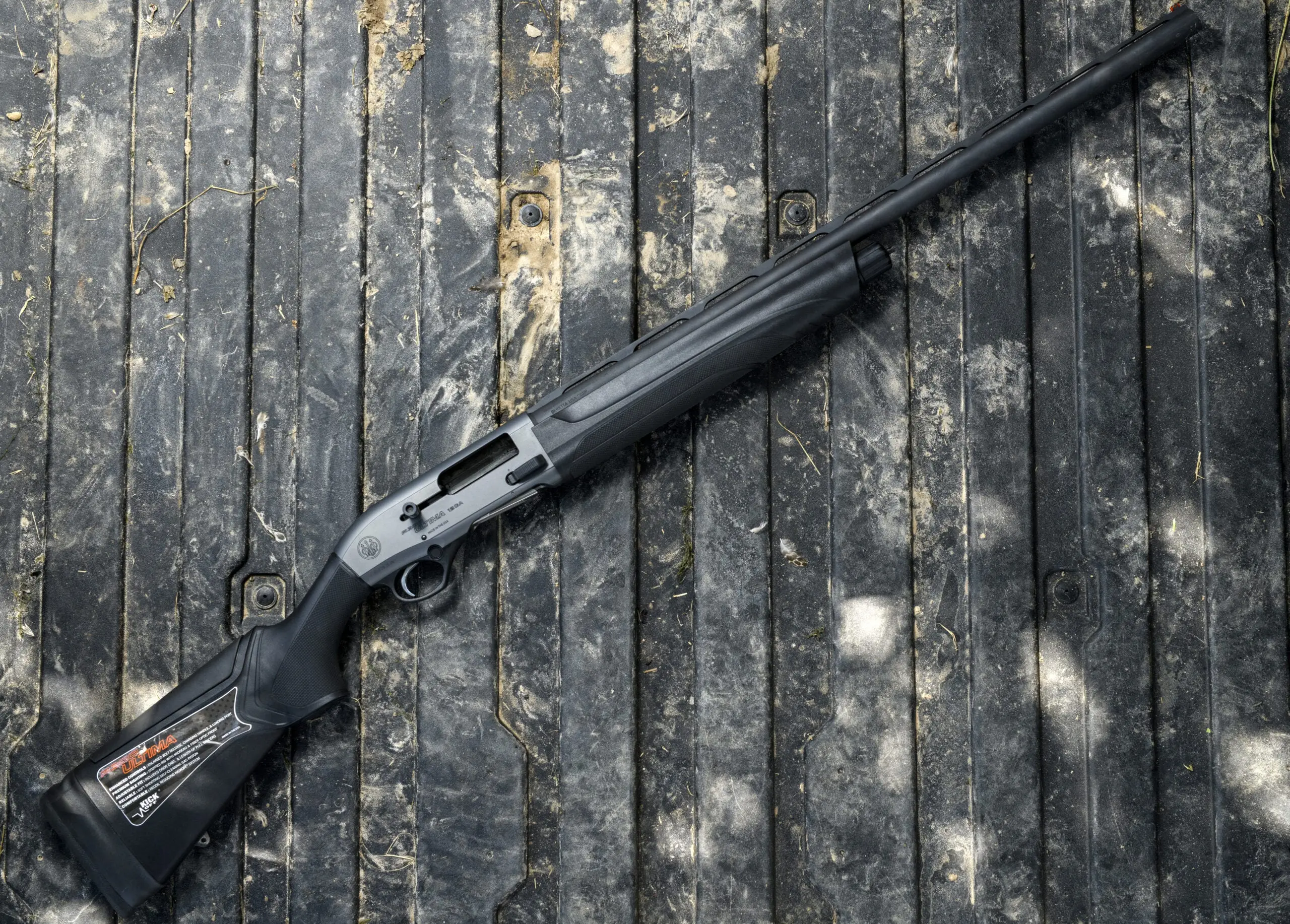
Specs
Gauge: 12
Chamber: 3-inch
Length: 47.5 inches
LOP: 13.8 inches
Trigger weight: 5.14 pounds
Overall weight: 7.7 pounds
Pros
Proven reliable design
Enlarged Control
Great value
Cons
Recoil
As a big fan of the A300 Outlander, which I believe to be the best semiauto under $1,000, I had high hopes for the Ultima, which adds waterfowler-friendly features to a great value gun and comes in both 12 and 20 gauge. Unfortunately one of those features, the Ultima’s version of the Kick-Off recoil reducer, worked more like a recoil amplifier. Even shooting the gun from a Lead Sled, I could feel the comb rising up to hit me in the cheek. Maybe we got a bad one, but the recoil overshadowed the gun’s many good points. It’s basically a Beretta 391, one of the greatest semiautos ever, made in the U.S.A., with a restyled receiver and enlarged controls. The Kick-Off reducer can be removed, so if it hits you the way it hit us, you can shoot this gun without it.
6) Browning Auto-5

Specs
Gauge: 12
Chamber: 3.5-inch
Length: 49 inches
LOP: 14.25 inches
Trigger weight: 6.9 pounds
Overall weight: 6.8 pounds
Pros
Points well, shoots 50/50 patterns
Reliable in bad weather
Cons
Recoils hard with 3 ½-inch ammo
Bolt can be bumped out of battery
Browning’s A5 puts an inertia design inside a receiver styled to recall the classic long recoil Auto 5. A lightweight 12 gauge, it comes in 3- and 3 ½-inch models. Our test gun was my own 3 ½-inch Wicked Wing model, which features cerakote metal and camo furniture and has performed well for me. It’s a reliable gun that shoots a dead-on 50/50 point of impact, which is what I prefer. A light gun, it has Browning’s effective recoil pad to cut the kick, but be aware that any light inertia gun will kick painfully with 3 ½-inch shells, although this gun is quite manageable with 3-inch ammo. And like many inertia guns, it can be bumped out of battery so it won’t fire, too. (Read a review of the Browning A5 here.)
Read Next: Classic Guns – The Browning A5 Will Never Go Out of Style
7) Browning BPS

Specs
Gauge: 12
Chamber: 3.5-inch
Length: 49.5 inches
LOP: 14.4 inches
Trigger weight: 7 pounds
Overall weight: 9 pounds
Pros
Well-made
Left-hander friendly
Cons
Long pump stroke
Awkward loading for target shooting
Introduced in 1977, the BPS has long been the class of the pump gun market—a well-made, high-quality gun available in every gauge, including 10. With its top safety and bottom ejection, the BPS is a favorite among left-handed shooters. It’s also a gun that takes long arms to pump. My arms aren’t short, and I’ve owned several BPSs and never gotten as comfortable cycling them as I am with an 870. The bottom eject makes them a pain to load if you want to use this gun for targets.
Outdoor Life’s Joe Genzel brought his father’s BPS to the test, a very heavy, older 3 ½-inch 12-gauge model made back when the 3 ½s were built on 10-gauge frames. They’re now built on 12-gauge frames. The BPS still has some welcome heft to it, with the new models weighing around 7 ¾ pounds in 3- and 3 ½-inch 12, and around 7 pounds in 20 gauge.
8) Browning Maxus II
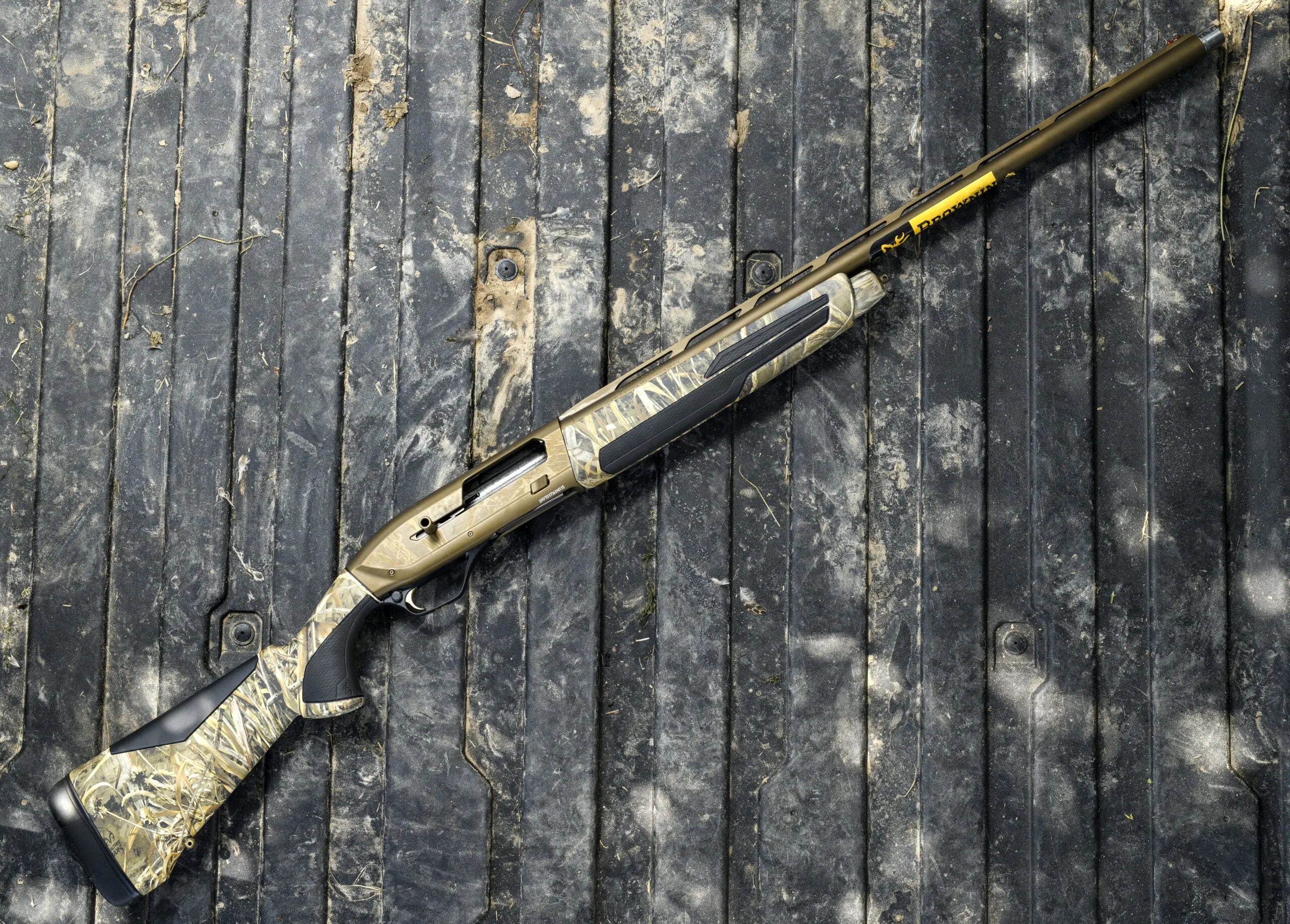
Specs
Gauge: 12
Chamber: 3.5-inch
Length: 47.25 inches
LOP: 14.4 inches
Trigger weight: 6.4 pounds
Overall weight: 7 pounds
Pros
Soft recoil
Stock is easy to length and shorten
Magazine cap
Cons
Expensive (but worth it)
Browning’s makeover of the Maxus gas gun does away with the original’s one annoying feature—a magazine latch in place of the traditional cap—and softens recoil, while retaining the same proven operating system and the Browning semiauto standbys of speed loading and a magazine cutoff button. A redesigned synthetic stock makes the gun much easier to adjust for length and a soft comb insert reduces felt recoil dramatically, although not as much as the Beretta A400 did. Available in 3- and 3 ½-inch 12 gauge, the Maxus II cycled everything we ran through it. All in all, it would make a great choice in a gas gun for any waterfowler, and the easily-alterable stock means it’s a gun that could grow with a younger shooter into adulthood. (Read a review of the Browning Maxus II here.)
9) Franchi Affinity 3

Specs
Gauge: 12
Chamber: 3-inch
Length: 49.5 inches
LOP: 14.2 inches
Trigger weight: 5.14 pounds
Overall weight: 6.8 pounds
Pros
Reliable
Affordable
Light and trim
Cons
Shape of TSA pad makes precise length adjustment difficult
A top contender for the best-value semiauto award and a great choice if you want the weatherproof, bulletproof advantages of an inertia gun, the Affinity 3 impressed us with its trim lines and sure function. I’ve had occasion to shoot Franchi inertia guns, and the people I know who own them are universally satisfied. What’s not to like? You get Benelli-like lines, light weight, and reliability in a package costing hundreds of dollars less. And while light inertia guns recoil stoutly, the soft Franchi TSA pad does a good job of cutting the kick.
10) Mossberg 500 Hunting
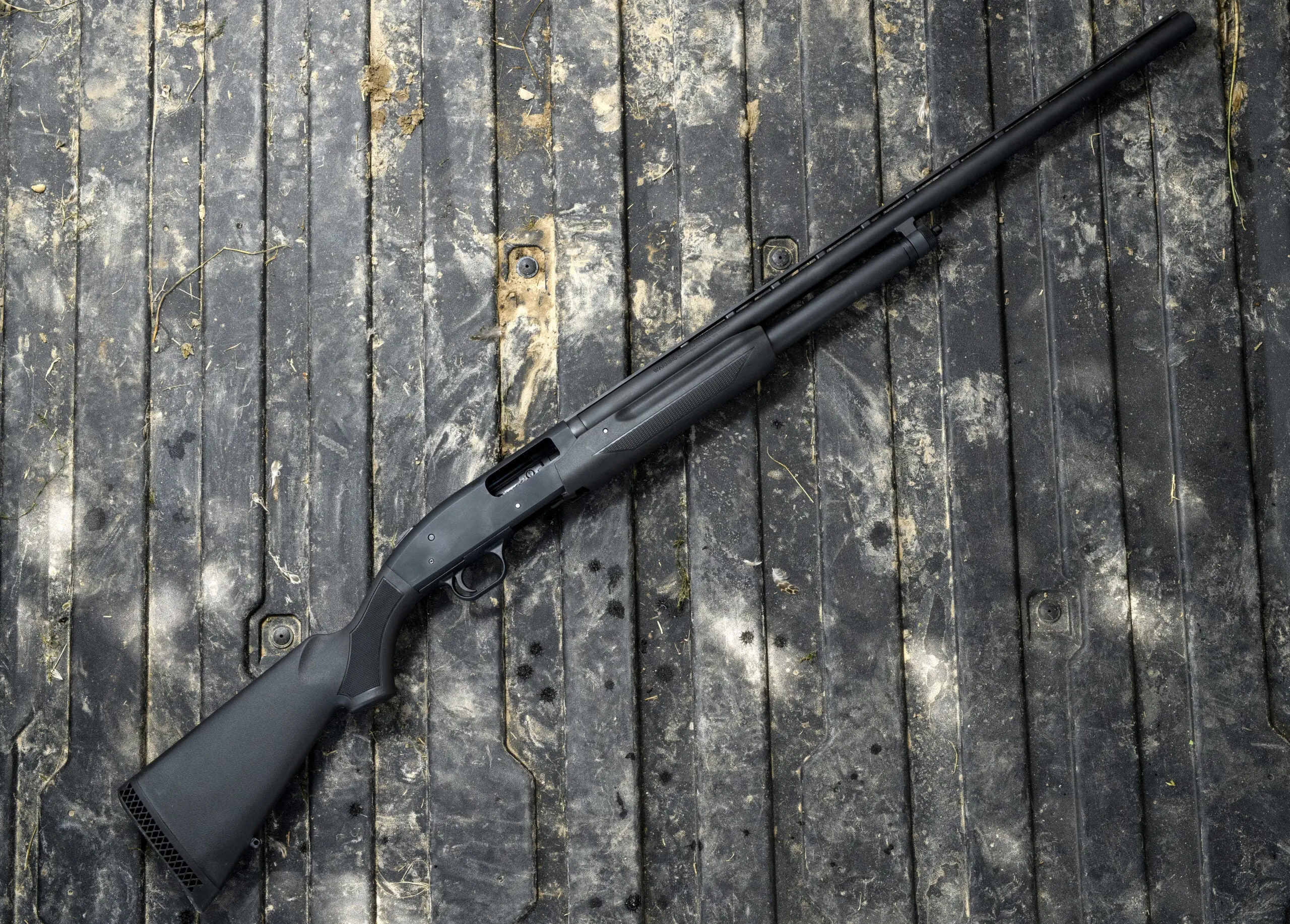
Specs
Gauge: 12
Chamber: 3-inch
Length: 47.5 inches
LOP: 14 inches
Trigger weight: 6.8 pounds
Overall weight: 6.5 pounds
Pros
Always works
Very affordable
Cons
Stiff plastic safety
Kicks
A budget classic, the Model 500 has been cycling shells since 1960. It ran neck-and-neck with the 870 Express among our testers. Our test gun shucked smoothly, shot straight, and patterned well. We chose the bare-bones black synthetic stocked version as our gun, and it sells at a low enough price that almost anyone can afford it. With its alloy receiver, the 500 is a very lightweight gun—our 3-inch 12 gauge weighed 6 ½ pounds—so while it’s not a burden to carry, it is definitely a gun you will feel when you shoot it, especially with heavy loads. (Read a review of the Mossberg 500 Hunting here.)
11) Mossberg 930 Pro
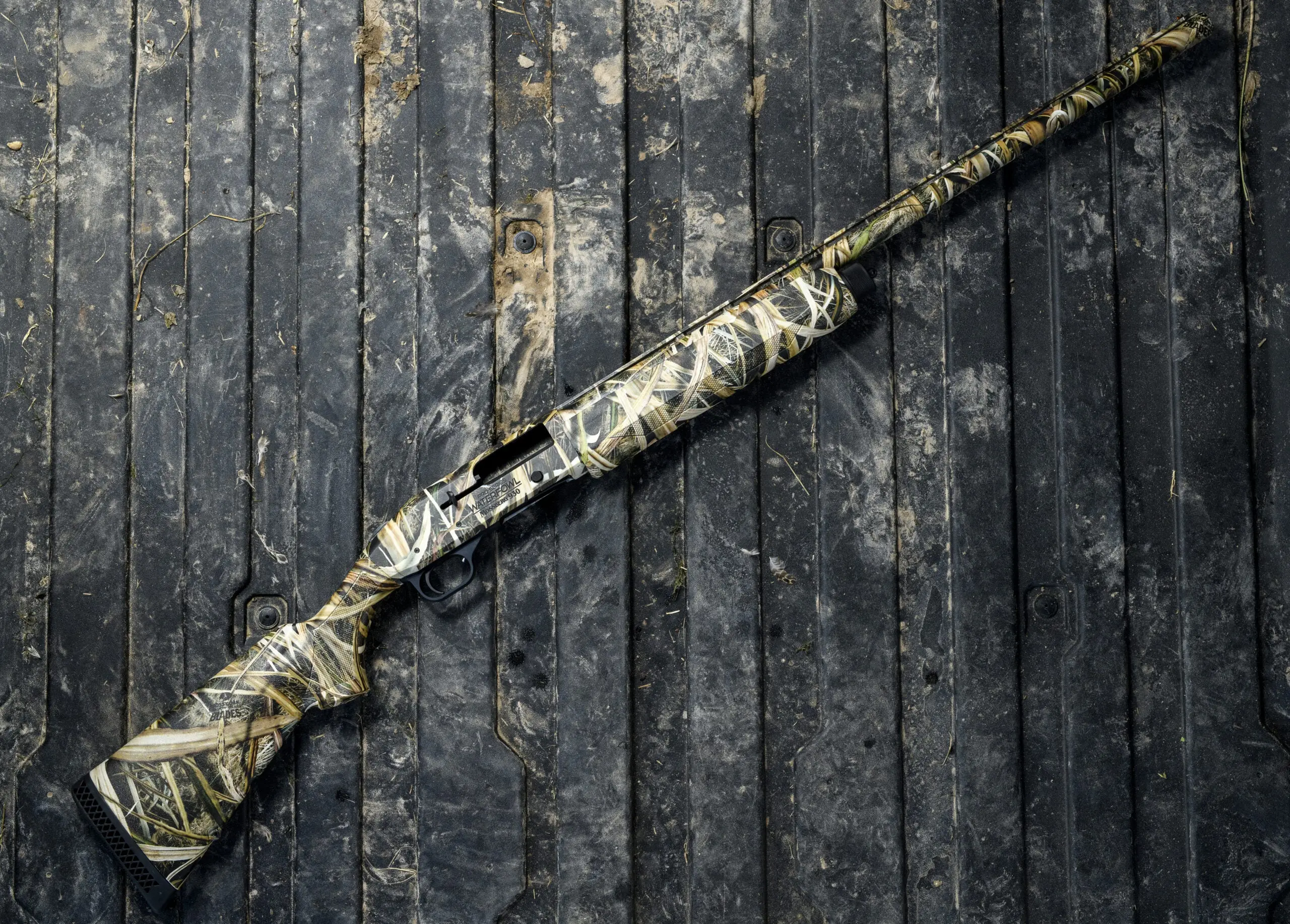
Specs
Gauge: 12
Chamber: 3-inch
Length: 48.5 inches
LOP: 13.5 inches
Trigger weight: 6.4 pounds
Overall weight: 7.7 pounds
Pros
Affordable
Top Safety
Soft recoil
Cons
Bulky forend
An inexpensive gas semiauto, the Mossberg 930 Pro is a gun of few frills with a price to match. That makes it a good choice for hunters on a budget who want the reduced recoil of gas gun. It feels inexpensive when you pick it up, and fit and finish don’t match the standards of pricier guns. It never malfunctioned, and it patterned well during the gun test, though. Between its gas operation and a robust 7 ¾-pound weight, it doesn’t kick much either. A bulky forend and slim buttstock do give it an odd feeling in hand, and while I didn’t like the way it felt, it was easy to hit with.
12) Mossberg 940 Pro Waterfowl
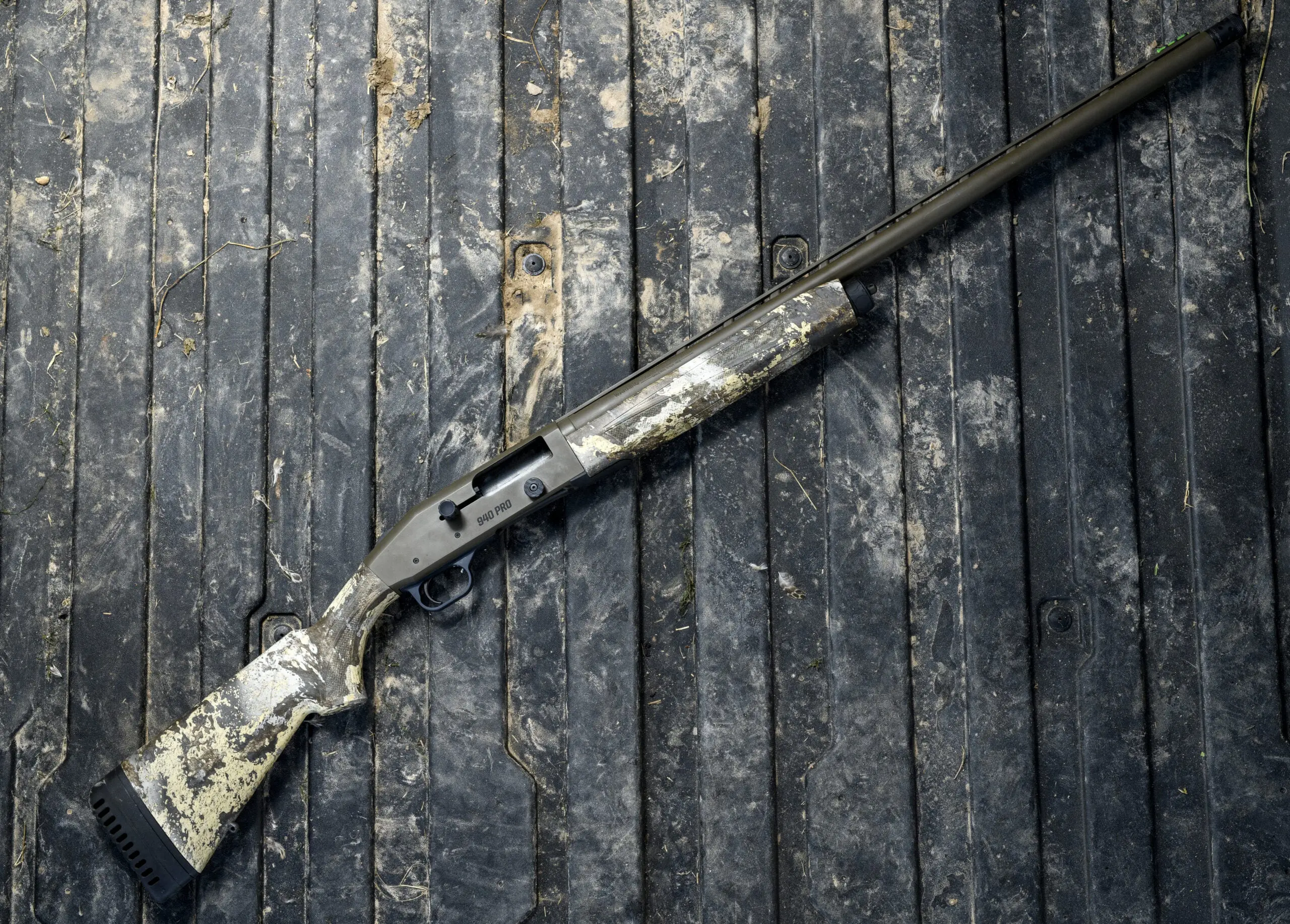
Specs
Gauge: 12
Chamber: 3-inch
Length: 48.5 inches
LOP: 13.5 inches
Trigger weight: 6.4 pounds
Overall weight: 7.7 pounds
Pros
Soft shooting
Very adjustable stock
Top safety for left and right-handed shooters
Cons
Poorly fit forend feels flimsy
An upgraded version of the 930, the 3-inch, 12-gauge 940 Pro Waterfowl includes features from the 940 JM 3-gun shotgun designed to make it more reliable and improve its ergonomics. It has a redesigned buffer tube, boron-nitride coated internals, and a stainless recoil spring as well as cerakoted metal surfaces. It also features an enlarged bolt handle and bolt release and a cutaway loading port for fast, easy reloads. The gun does have an inexpensive look and feel to it. Its performance was quite good. The gas system worked well and did an admirable job of reducing recoil. And the gun cycled everything including light 7/8-ounce reloads.
13) Remington Model 1100
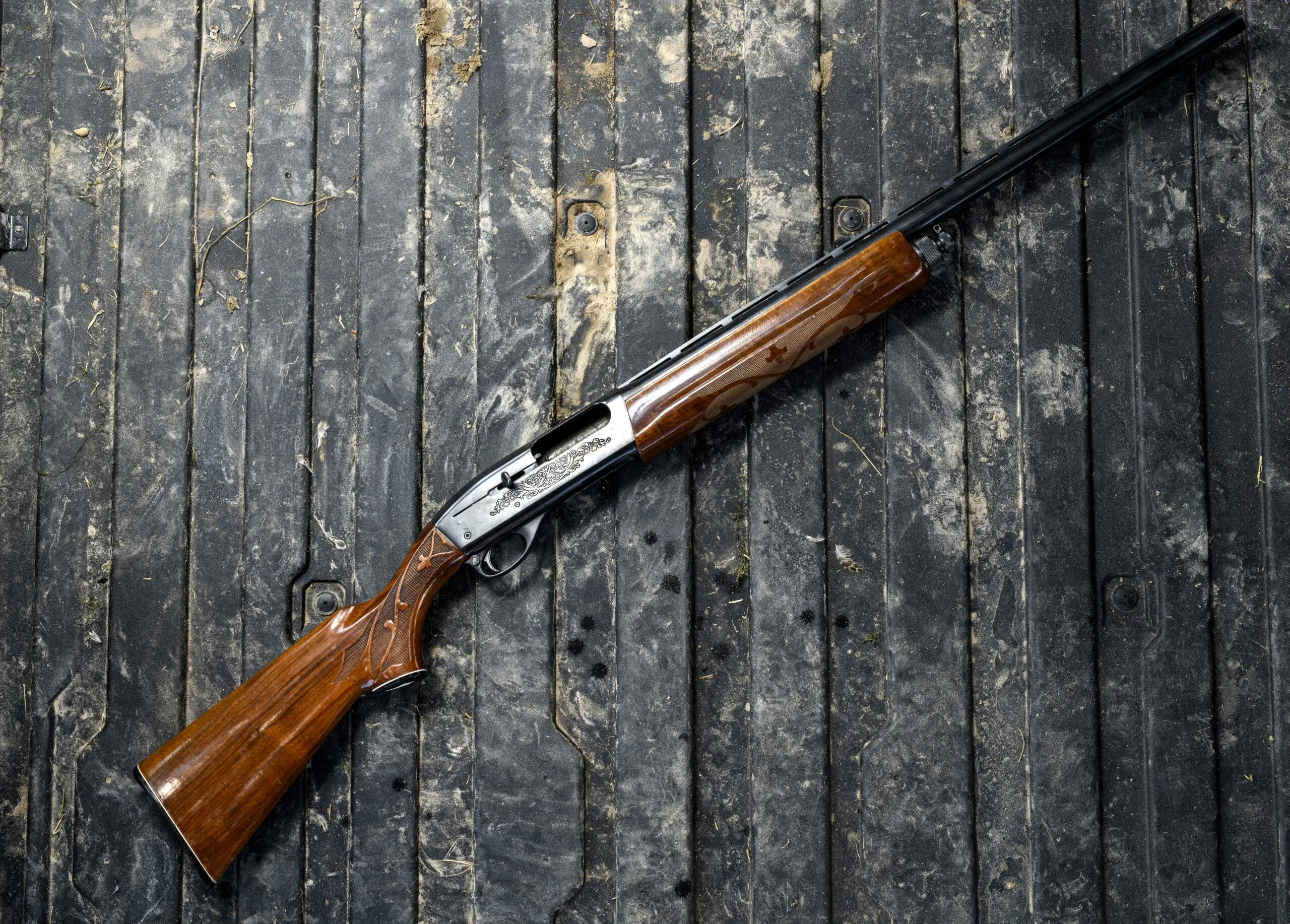
Specs
Gauge: 12
Chamber: 2¾-inch
Length: 47.75
LOP: 14-inch
Trigger weight: 4.9 pounds
Overall weight: 8.1 pounds
Pros
Soft shooting
Fits many people
Cons
Lack of load interchangeability makes it less versatile
With the 1100 currently in hiatus as the new owners of RemArms get back up to speed, we tested an older model, one of the classic blued and gloss walnut, fleur-de-lis checkered guns from the 70s. All the testers swooned over it. At the range and in the field, the 1100 was one of the softest shooting gas guns. Its stock fits a wide range of people and, if you keep it clean, it works very reliably. Designed before 2 ¾- and 3-inch load interchangeability, the 1100 comes in standard and 3-inch magnum versions, and either one will still do a fine job in the duck blind 58 years after it was introduced.
14) Stoeger M3000
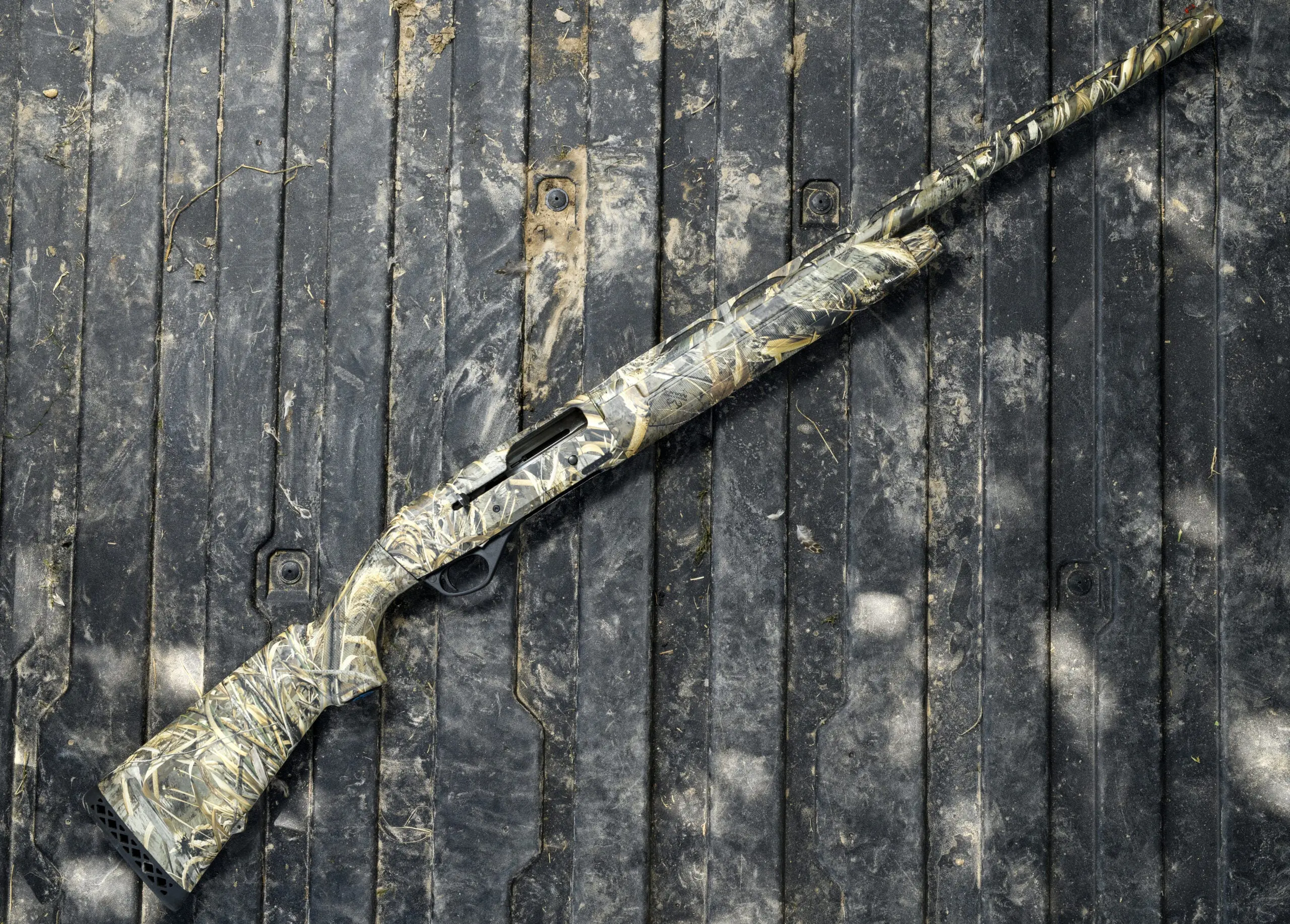
Specs
Gauge: 12
Chamber: 3-inch
Length: 48 inches
LOP: 14 3/8 inches
Trigger weight: 8.15 pounds
Overall weight: 7.3 pounds
Pros
Affordable
Inertia action
Cons
Quality can vary from gun to gun
Heavy trigger
A bargain-priced gun, the Model 3000 puts an inertia-operated semiauto into a price range anyone can afford. And, some people shoot their 3000s forever without a lick of trouble. Others aren’t so lucky. We weren’t. Our gun shot straight and patterned well, but we had a couple of failures to cycle 3-inch loads, and the grip cap fell out. Like any fairly light inertia gun, the 3000 wasn’t a super-soft shooter and it was burdened by a heavy, 8-plus-pound trigger that might not bother you in the blind, but would be a drag in the turkey woods. And, it is a bit bulkier up front than other inertia guns because the forend has to be big enough to accommodate a recoil spring that goes around the magazine tube and not in the stock. (Read a review of the Stoeger M3000 here.)

| Our duck-gun test crew after our final teal hunt at Pintail Hunting Club. From left to right: Joe Genzel, Lance Stancik, Alex Robinson, Tucker Stancik, Colin Kearns, and Phil Bourjaily. Stephen Maturen |
FAQs
Q: Is a 12 or 20 gauge better for duck hunting?
The 12-gauge remains the best choice for duck hunting. Not only do they handle heavier loads that can save the day when birds don’t decoy well, the added heft of a 12 makes it an easier gun to shoot well. The wide range of ammunition available for 12 gauges means you can load it down with very soft-recoiling 2 ¾-inch shells or target loads, but also shoot heavy magnums when the situation demands. And, if gun weight is a concern, there are several light 12s on the market.
Q: Is a pump gun good for duck hunting?
Pumps have several advantages as waterfowl guns. First and foremost, they are reliable. Where grit, mud, ice, and moisture can cause a semiauto to fail, pump guns will keep on working in miserable conditions. Second, they aren’t finicky about ammunition. Because the action is powered by the shooter—not expanding gases or recoil—a pump will cycle any load no matter how light. Third, pumps are tough and inexpensive, and if you want a gun that you don’t have to baby or worry about, a pump might be the best duck hunting shotgun for you.
Q: Can you duck hunt with a 20 gauge?
Twenty gauges have become popular among waterfowlers in recent years due to their light weight and lower recoil. A 20 gauge is more than enough gun if you shoot your birds at close range over decoys as most people prefer to do. And, if you load it with bismuth or HeviShot, it will reach out as far as many 12s loaded with steel. A 20 gauge is not as versatile as 12, but within its limitations it makes a great choice.
Best Duck Hunting Shotguns: Final Thoughts
Best Duck Hunting Shotguns of 2023
Editor’s Choice: Beretta A400 Xtreme Plus
Best Value: Winchester Super X4
Best Pump Shotgun: Remington 870 Express
The Rest of The Best Duck Hunting Shotguns of 2023
The takeaway from our gun test is that there’s a waterfowl gun for nearly any need or budget. We did our best to sort through them and come up with the best choices at different price points. We paid special attention to how the guns patterned, how well they functioned in the field and on the range, how much they kicked, how they handled, and how well they would serve as all-around guns. But there is only so much of this work we can do for you. Ultimately, the best duck gun is a personal choice. You have to pick a gun that suits the type of hunting you do, that fits you best, and has the right weight and balance for your shooting style.
To book at duck hunt at Pintail Hunting Club, visit Pintailhuntingclub.com.
Why Trust Us
For more than 125 years, Field & Stream has been providing readers with honest and authentic coverage of outdoor gear. Our writers and editors eat, sleep, and breathe the outdoors, and that passion comes through in our product reviews. You can count on F&S to keep you up to date on the best new gear. And when we write about a product—whether it’s a bass lure or a backpack—we cover the good and the bad, so you know exactly what to expect before you decide to make a purchase.
![Field & Stream [dev]](https://images.ctfassets.net/fbkgl98xrr9f/1GnddAVcyeew2hQvUmrFpw/e4ca91baa53a1ecd66f76b1ef472932b/mob-logo.svg)

